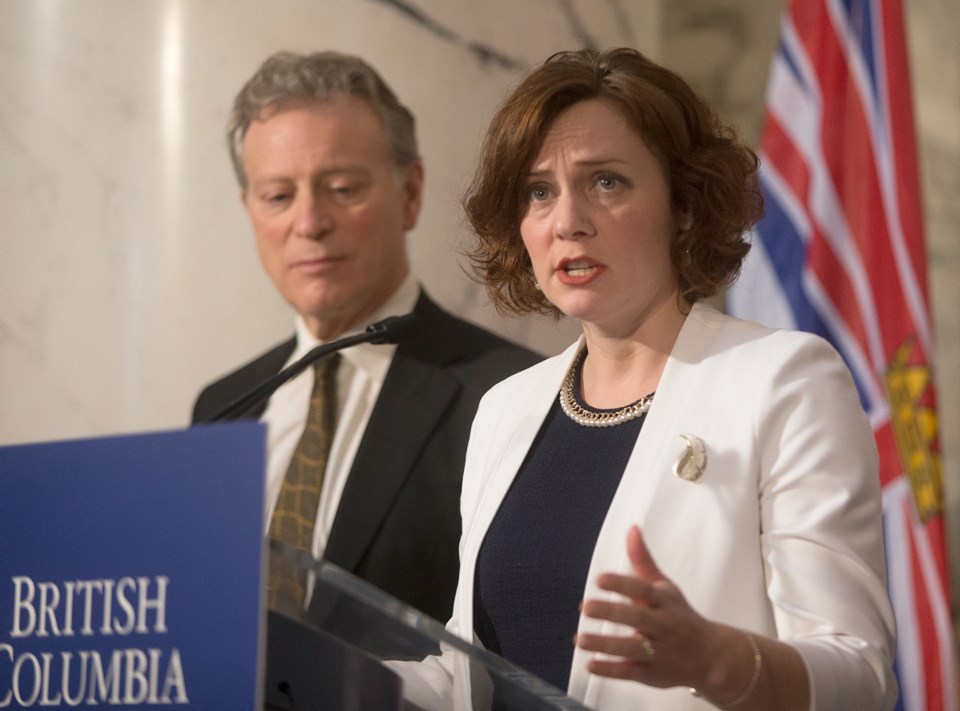Premier John Horgan and his NDP government are going ahead with the Site C dam project ŌĆö and now they must brace for the fallout. Horgan announced Monday what he called a very difficult decision, and added that the cost estimate is now $10.7 billion.
The government members knew they would get battered no matter which way they jumped on one of the most contentious issues in a province that is never short of contentious issues. They had to puzzle out not only the bald question of whether sa╣·╝╩┤½├Į HydroŌĆÖs dam is needed, but also how their decision would be received by voters.
Opinion-poll results have varied as the project evolved, but there appears to be no clear majority either for or against the dam.
Environmentalists and other opponents are well-versed in the questions of power-generation systems, the economics of the dam, the implications for farmland and the impact on First Nations. But the government knows that for a lot of British Columbians, particularly blue-collar ones, the questions are much simpler.
If the project were stopped, their reaction would be clear: ŌĆ£We spent $2 billion to dig a hole and now youŌĆÖre going to spend $2 billion to fill it in.ŌĆØ
Opponents of the dam argue the remediation costs of cancelling the project are inflated, but for a significant slice of the electorate, digging a hole and filling it in at any price is wasteful mismanagement. And thatŌĆÖs a label the NDP cannot afford.
The party has spent a generation trying to live down the fast-ferries fiasco, the biggest argument used by those who claim the NDP canŌĆÖt be trusted with our money. While the left wing of the party claims that the ferries were then-premier Glen ClarkŌĆÖs baby and they never approved the idea, the voters and other parties ignore such nuances.
Burying money under the Peace River with nothing to show for it would breathe new life into that bogeyman.
While such considerations donŌĆÖt have much to do with the detailed critiques of the project from environmentalists, Horgan has to think about voter reaction and also the reaction of his allies in the Green Party.
He knows the Greens are against the dam, but he also knows that they wonŌĆÖt withdraw support for his government over the issue. The Greens are determined to persuade voters to approve the referendum to change the provinceŌĆÖs electoral system to some form of proportional representation.
They want to fight the next election under PR, and will endure almost anything from Horgan to make sure that happens ŌĆö even though Green Party Leader Andrew Weaver last week tried to downplay the importance of the referendum.
Weaver dropped a gift into HorganŌĆÖs lap when the project was first considered when he said of the power from Site C: ŌĆ£There is no question, this is clean energy.ŌĆØ Although he says the falling price of wind and solar energy make them more viable, having that ŌĆ£clean energyŌĆØ comment on the record makes it harder for Weaver to fight the dam, either now or during the next election.
Of course, the Greens and environmentalists are not the only ones fighting the dam.
West Moberly First Nations and Prophet River First Nations immediately said they would file for an injunction to stop the dam.
However, other First Nations were likely to sue if the dam was cancelled because they have more than $100 million in procurement commitments.
About 200 Indigenous workers are employed at the project. Several First Nations have also signed ŌĆ£impact-benefit agreementsŌĆØ that provide cash payments, procurement deals and land transfers.
The contradictory interests of the different First Nations could look to the government like a no-win situation.
Apart from those pros and cons, the government might see some ways to make the dam more salable to those who are on the fence.
Hydro statistics for September showed 49 apprentices out of 2,375 workers that month. Apprentices are the future of the trades in sa╣·╝╩┤½├Į, and training more of them is an investment in that future.
The government promised Monday to ensure more apprentices and First Nations workers are hired.
Similarly, the government could get more buy-in from communities and First Nations by sharing some of the wealth. sa╣·╝╩┤½├Į Hydro will have to pay water-licence fees. Tucking that money and some of the profits (if there are any) from the electricity into a legacy fund could buy some good will.
Indeed, Horgan announced a new community-benefits program to make sure that local people get something tangible out of the project, and he promised a new sa╣·╝╩┤½├Į Food Security Fund to support farmers and spur agricultural innovation. The food fund would apply to the whole province, but would be paid for with Site C revenues.
If all these considerations make it appear the decision is political, thatŌĆÖs because it is.
The government had to decide if it could live with the consequences of its go/no-go decision, and then determine what it could do to sell that decision to voters, most of whom are not conversant with the detailed arguments of the two sides.
While Horgan blamed the mess on the previous government, he owns it now.
In cold, political terms, the government bets that by election day in 2021, unless it goes wildly over budget or falls down, the Site C dam will be old news.



